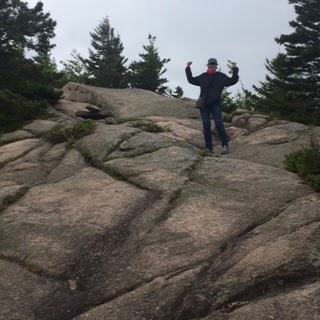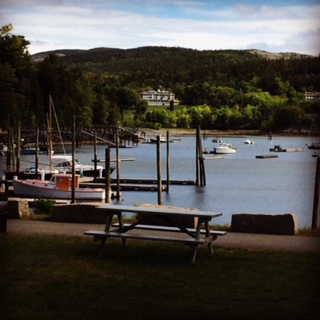 |
Fermentation vessels - there are four stories
of these! |
 |
| Mash tuns and boil kettles. |
Mary and I are just getting back from a week of vacation in Massachusetts, New Hampshire, and Maine.
While I am still getting the photos downloaded, I wanted to get started with a few blog posts from the trip - as we did during the 2014 vacation to Mendocino, Mary indulged me with a few brewery stops, so I'll start with those. I already posted about seeing the Anheuser Busch Clydesdales, so why not begin with the brewery tour there in Merrimack, NH.
 |
These are new ale fermemters to be installed
at the brewery. The jacketed tanks are
stored upside down, pending construction. |
Anyone who visits this brewery can get on a tour to see the high points, and I had done that before - actually this is one of two A-B breweries I've toured, the other one is in Tampa - but Mary and I decided to take an upgraded tour behind the scenes into the production areas. But first let me detour into a personal history with Anheuser Busch.
As the team and I have been making progress on Hawksbill Brewing Company, I only recently remembered that one of my first job offers after I completed my undergrad was with Anheuser Busch. The Tampa brewery is near USF, where I got my bachelor's degree, and I got a referral for a quality assurance spot there back in 1988. I actually got an offer from them, and really considered taking the job, which included two cases of beer per month as part of the compensation - we learned that it's still a standard part of the package these days, too!
 |
| The A-B hops demonstration garden. |
The job I took during that job search was with a government contracting firm based in Billerica, Massachusetts, not too far south from the Merrimack brewery. During a two-week orientation trip I went up for a brewery tour on my free Sunday. During our trip this time, I remembered how much things had changed - everything but the tasting room, that is, it was pretty much what I remembered!
 |
| One of the automation screens. |
After a short overview of the history of the company (light on details of the current A-B Inbev situation, focused a bit more on the branding we Americans know so well), we went off on our tour of the plant. They even suited Mary and me up in safety gear!
We visited the grain room, mash tuns, boil kettles, and fermentation spaces during the trip. The vessels are typically in excess of 700 barrels, and this is a 24/7 operation, so they really go through the ingredients. The grain bed in one of the mash tuns shown above is four-feet deep!
We also had a look at the control room and quality assurance areas. As you can imagine, with a plant this size, there is a lot of automation. I have a highlight photo here - there is also software that keeps an inventory of the hops on hand, and automatically compiles the hops bill for whichever recipe is being brewed on a given day.
 |
| One of the canning lines. |
 |
| Part of the bottling line. |
After we stopped in the fermentation room, we had a taste of Bud Light pulled right from one of the tanks.
We learned that the tanks we could see in the room were less than one quarter of all the ones in this brewery - the fermentation building is four stories tall, and each floor is essentially laid out the same way as the one we saw.
 |
| Our tour guide Katherine, along with the flight I sampled. |
After all of that we checked out the bottling and canning lines. I remembered that the team at Boulevard were particularly proud of their line, which was being upgraded when Eric and I visited. I've also seen the line at Port City in Alexandria...but the scale of these two breweries doesn't hold a candle to what they had at A-B. The operation stretched in both directions as far as the eye could see, bottles on one side, and cans on the other.
To close out the tour, we went down to the tasting room for some samples. In addition to the A-B brews that everyone is very familiar with, there were some from the new acquisitions to be tried. I selected their Red Bridge Gluten Free, Oculto (aged in Tequila casks), the Blue Point Summer Ale, and the Blue Point Blueberry Ale.
It was a good sample, and I was very impressed with the Gluten Free offering as well as the Blueberry Ale - given the scale of the brewery, it seemed that making a product like this wouldn't be economically feasible. That's a discussion for another day, though: the impact of the craft beer industry and how this company is responding - remember that the Devil's Backbone acquisition is still fresh, and A-B was an early investor in Red Hook.
It would be easy for me, an aspiring craft brewery operator, to be negative about this company that is so dominant in the industry. But that isn't the impression I was left with after the tour, and besides, I couldn't feel that way about them given the history and fond memories I have of them. They have a key role to play in the beer industry, they're a true leader, even if you can't call them "craft" - and they do everything so well, there is a lot that we can learn from them.
I recommend the tour for anybody who happens to be in the area. It's well worth the stop, and the upgrade is only $25 if you want to check out behind the scenes.













































